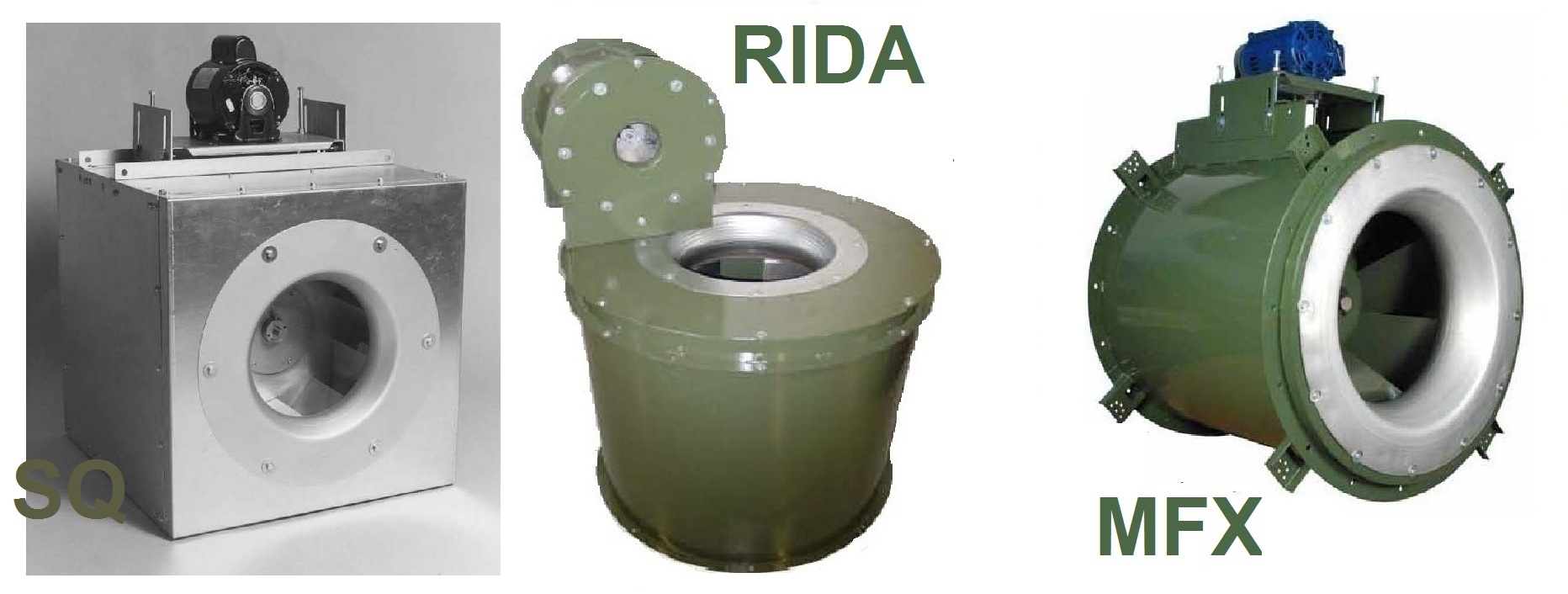OLEG FAN BLOWER

RIDA Direct Drive Tubular Centrifugal Fan
Tubular Centrifugal Direct Drive Fans Type RIDA are quiet, dependable in-line centrifugal fans recommended for a wide range of general exhaust applications where low, medium and high ranges of air volume and pressure are specified, in both ducted and non-ducted ventilation systems. Applications include virtually all types of light manufacturing, commercial and institutional buildings such as shopping centers, hospitals, schools, hotels, office and apartment buildings, warehouses, airports, bus terminals and many others. Designed for easy positioning and quick installation, the versatile Tubular centrifugal design can be located in side equipment rooms, in ceiling spaces, or as parts of O.E.M. equipment. RIDA models are dependable centrifugal fans recommended for a wide range of general exhaust applications where low, medium and high ranges of air volume and pressure are specified, in both ducted and non-ducted ventilation systems. The advantages of belt drive inline centrifugal fans over direct drive fans include quiter operation, adjustable performance to suit operating needs and availability of larger volume units.
RIDA Construction: The fan housing and motor supports are made of heavy gauge steel plate for maximum strength and durability. The overlapping deep-spun venturi minimizes air turbulence and increases efficiency. The aluminum centrifugal wheel is a non-overloading, backward-inclined type, selected for low noise levels. Painted parts are coated with epoxy to provide a protective coating rated excellent for hardness, impact resistance, adhesion and chemical resistance. Contact factory for protective coating options.
Belt Drive: RIDA direct driven models are designed for quieter operation and lower initial cost. They use standardly available NEMA frame motors.
All models bear the AMCA
Seal. UL listings is available on most models.
With the exhaust requirements
calculated and fan system sized to handle the required volume at the
required pressure, the drying process will run smoothly. Production
results are consistent and the production facility's environment also
is improved by removing contaminated air. A good understanding of
exhaust requirements allows better control of the drying process. A
ventilation system should provide for a comfortable environment with
respect to humidity and temperature. The overall goal of climate
control is to provide an environment that is not too cold, hot, dry or
humid, and that is free from drafts and odors. Humidity refers to the
amount of moisture in the air and extremes in humidification levels can
influence how comfortable you may be. When the air is too humid, it
makes people feel uncomfortable (wet, clammy) and can promote mold
growth. On the other hand, low humidity conditions (which typically
occur in the winter months) dry out the nasal and respiratory passages.
Low humidity may be associated with an increased susceptibility to
upper respiratory infections. Static electricity problems (affecting
hair and clothes, particularly synthetic fibers) are good indicators of
an office with low relative humidity.
